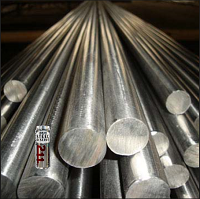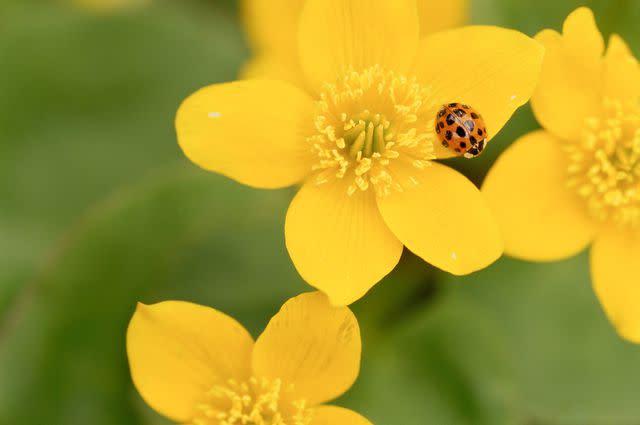That's not a yellow ladybug — it's an invasive A
Post# of 128816


They look similar, but one type helps control unwanted insects in the garden while the other is a pest itself. Here's how to tell these look-alike bugs apart.
Finding a ladybug in your garden is usually something you want to see. These beetles are beneficial to your garden because they eat plant pests such as aphids and scale insects. However, multicolored Asian beetles look like yellow ladybugs but have become a pest themselves. It's become increasingly common to spot Asian lady beetles congregating in huge numbers on houses and other buildings in the fall. The beetles like to infiltrate homes for the colder months, can bite, and will release an unpleasant odor similar to stink bugs when disturbed. Unfortunately, these invasive insects also have been pushing out native ladybugs. If you can tell the difference between the two insects, you might be able to stop an annoying problem before it starts.
Asian lady beetles vs. ladybugs
You can identify a ladybug by its markings and size. There are several different species, with most sporting red shells and various numbers of black spots. Their heads tend to be black with small white "cheeks." Ladybugs are typically rounder and smaller than Asian lady beetles if you look at them side-by-side. Asian lady beetles also have larger white "cheek" markings and have more white on their heads overall.
A sure way to distinguish between an Asian lady beetle and a ladybug is to look at the spot where the head meets the wings. If the bug in question has a black 'M' marking in that spot, that's a telltale sign you're dealing with an invasive species. Asian lady beetle shell color can range from light orange to bright red, so most will have a similar color to a ladybug.
Asian lady beetles, which sometimes resemble yellow ladybugs, can sneak into your home through cracks or holes when it gets cold outside. Ladybugs won't do that. Light attracts the pests, so they'll often congregate on siding on the south side of a building, around door frames, and in windows. They may bite by scraping the skin they land on, which feels like a pinprick but won't cause any real damage. When threatened, Asian beetles release a stinky yellow substance that can stain surfaces and trigger allergic reactions.
While it's unusual, Asian lady beetles can infest dogs' mouths. If a dog happens to snap up some beetles, the insects may attach themselves to the roof of your pet's mouth. This won't always mean a trip to the emergency vet, though the beetles will usually need to be pried off. However, if swallowed, the insects can irritate a dog's gastrointestinal tract, and in extreme cases, can be fatal. So make sure to keep your pets away from Asian lady beetles and check their mouths periodically.

How to control Asian lady beetles
The best way to keep Asian lady beetles out of your home is by sealing and patching potential entrance points. In addition, close up any gaps around windows, doors, and siding to minimize risk. The good news is that if they do get into your home, Asian lady beetles won't reproduce indoors and will make their exit in spring.
To safely get rid of Asian lady beetles in your home:
1. Vacuum them up and empty the vacuum when you're done.
2. Contain them in a sealed bag before tossing them into the trash, so they can't crawl out.
3. Avoid using pesticides because, besides exposing yourself to toxic chemicals, large numbers of dead beetles inside your walls may attract other pests.
Sticky glue traps kept out of reach of small children and pets are a safe option for more minor infestations.
Outdoors, you can clear them off the areas the beetles usually congregate with a broom or a strong spray of water from a power washer or hose. Then scrub down the area with soapy water; the pests most likely won't return because the soap smell overpowers the pheromones that attract more beetles to the location.
What do Asian lady beetles eat?
Asian lady beetles are primarily insectivores and will eat aphids, mites, mealybugs, and scale insects as well as their eggs and larvae. Unfortunately, they will also eat native ladybugs (if they are small enough) and will infest (and snack on) fall-ripening fruits like apples, pears, grapes, and berries.
Do Asian lady beetles attack ladybugs?
Asian lady beetles pose a threat to ladybugs and will eat them (and their young) if the ladybugs are small enough for the Asian lady beetles to overtake them. Of greater concern is the Asian lady beetle’s tendency to crowd out beneficial ladybugs by competing for the same food source.
Where are Asian lady beetles a problem?
The Asian lady beetle is native to eastern Asia but was introduced to the United States in the late 1910s. In the late 1970s and early 1980s, Asian lady beetles were intentionally released by the Department of Agriculture in several states including Georgia, South Carolina, Louisiana, Mississippi, California, Washington, Pennsylvania, Connecticut, and Maryland to control the aphid and scale populations. Asian lady beetles can now be found across the continental United States and parts of Canada.
https://www.aol.com/lifestyle/thats-not-yello...33475.html
 (2)
(2) (0)
(0)